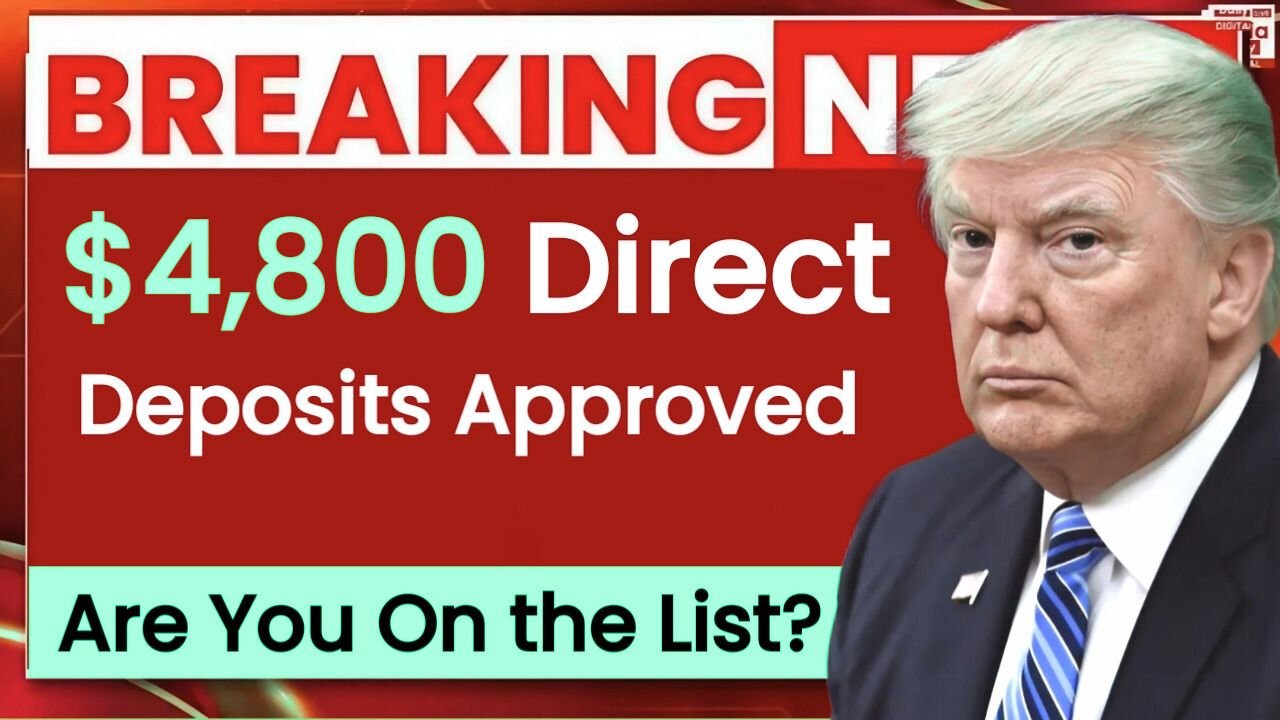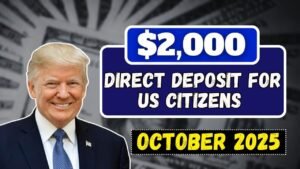Rumors of a $4,800 direct deposit arriving in October 2025 have spread quickly across the internet, giving hope to millions of Americans facing high prices and financial strain. But is this payment real? Here’s what you need to know about the $4,800 stimulus rumor, who might qualify, and how to stay safe from scams.
What Is the $4,800 Direct Deposit Proposal?
According to online reports, the U.S. government is considering a one-time $4,800 payment to help citizens deal with rising living costs and inflation. The proposed plan—sometimes called a “Cost of Living Adjustment Rebate”—would offer temporary relief to low- and middle-income households struggling with rent, groceries, and other essential expenses.
If approved, the IRS and the U.S. Treasury Department would likely manage the payments, similar to past stimulus checks. However, no official announcement or legislation has confirmed this program.
✅ Fact Check: As of October 2025, the $4,800 direct deposit has not been approved or confirmed by the U.S. government.
Who Might Qualify (If Approved)
If this payment becomes official, eligibility could follow the same income-based model as previous federal stimulus programs:
| Filing Status | Income Limit (for Full Payment) |
|---|---|
| Single | Up to $75,000 |
| Married (Joint) | Up to $150,000 |
| Head of Household | Up to $112,500 |
Those earning slightly more might receive a reduced amount.
Additionally:
- Social Security, SSI, SSDI, and VA beneficiaries could qualify automatically.
- A valid Social Security Number and updated bank information with the IRS would be required.
Possible Payment Timeline
If Congress approves the plan, the IRS could begin sending payments as early as mid-October 2025, starting with:
- Direct deposits for taxpayers with bank info on file.
- Paper checks or debit cards for others in later phases.
- An updated “Get My Payment” portal might reopen for tracking and verification.
Until an official rollout is announced, no payment schedule is guaranteed.
Economic Impact and Concerns
A $4,800 payment would bring short-term relief for families covering essentials like housing, food, or medical costs. However, economists warn that large-scale payouts can increase the national deficit and risk reigniting inflation.
Supporters argue that direct payments boost local economies by increasing consumer spending, but critics believe targeted programs might be more sustainable than broad stimulus efforts.
How to Avoid Scams
Be alert — fake websites and messages often appear during rumored payment programs.
Remember:
- The IRS never calls, emails, or texts to offer payments.
- Don’t share personal or banking details with unverified sources.
- Always check updates only from irs.gov or treasury.gov.
FAQs About the $4,800 Direct Deposit
Q1. Is the $4,800 direct deposit confirmed?
No. It’s still a rumor — no official statement or law supports this payment yet.
Q2. When will payments be made?
There is no confirmed date. Any real rollout would be announced by the White House, IRS, or U.S. Treasury.
Q3. Do I need to register for the $4,800 payment?
No registration exists. If a program becomes official, the IRS will automatically distribute payments based on tax records.
Q4. Can Social Security recipients get this payment?
Possibly, if it’s approved and they meet income requirements — similar to prior stimulus checks.
Q5. How do I verify official news?
Always rely on irs.gov, treasury.gov, or major news outlets. Ignore links or forms shared via social media or email.
Conclusion: Stay Informed, Stay Safe
The $4,800 direct deposit rumor has sparked hope during tough economic times, but as of now, it remains unverified. If it ever becomes official, the IRS and U.S. Treasury will release clear guidance and timelines.
Until then, stay cautious of misleading claims and rely only on official federal updates for accurate information.



